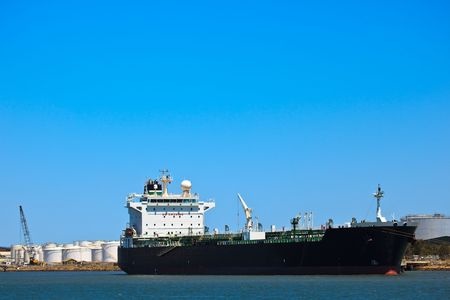6 January, 2016
Until now the 1981 English case of The Halcyon Isle has been the principal authority on maritime liens and conflict of laws in Anglo-Common law jurisdictions. In that case, which was on appeal from the Singapore courts, the majority of the Privy Council held that the recognition and enforcement of maritime liens were to be determined according to the law of the forum in which the proceedings were commenced (i.e. the lex fori).
The practical effect of the decision is that the circumstances in which a vessel can now be arrested for a maritime lien in Australia has expanded, meaning that Australia is an even more arrest and enforcement-friendly jurisdiction.
In Australia, the problem was touched on in the 1998 Federal Court case of The Skulptor Vuchetich. One cannot determine from the judgment itself whether the court was taken through any considered analysis of the key decisions of the various Common Law jurisdictions to examine the differences between them, before concluding that the decision of the majority in The Halcyon Isle should be followed. That is, that the recognition of a foreign maritime lien, like the problem of ranking and priorities, should be decided by applying the lex fori.
Tracking forward to 11 September 2015, there has now been a further Australian case that turns the position in Australia, at least, on its head. The case involved the vessel, the “Sam Hawk”, in respect of which a claim for a foreign maritime lien arose from the supply of bunkers to the vessel.
At a time when OW Bunkers has had the headlines for some time now, and Daiichi recently filed for bankruptcy protection with huge debts, this Australian decision has already seen reactive claims being commenced in the Australian courts and there will likely be further activity.
Background
While maritime liens are known to many legal systems, the precise acts and events that give rise to maritime liens can differ between jurisdictions. Jurisdictions that share a common heritage with English maritime law (e.g. Australia, South Africa, New Zealand and Singapore), historically only recognise maritime liens where the maritime claim is for salvage remunerations, collision damage caused by a ship, seaman’s wages, master’s wages and disbursements in the course of a voyage, and claims for bottomry and respondentia
(the latter two of which are hardly heard of today).
In other jurisdictions such as United States (US) and Canada, legislation specifies what types of maritime claims give rise to maritime liens. Under the laws of both the US and Canada, more maritime liens are recognised, including a maritime lien for the supply of necessaries. By contrast, Anglo-Common law jurisdictions view claims for necessaries as giving rise only to a statutory right of action in rem against the vessel, rather than a maritime lien.
The facts
The “Sam Hawk” was time chartered to Egyptian Bulk Carriers (“EBC”). The charter party provided that EBC was responsible for arranging and paying for bunkers and also contained a ‘no lien’ clause.
EBC entered into a bunker supply contract with Reiter Petroleum Inc (“Reiter”), of Canada, to stem the vessel in Turkey. The bunker supply contract was expressly subject to Canadian law, purported to grant a contractual maritime lien over the vessel and stated that the law of the United States would apply to determine the existence of any maritime lien for the supply.
Reiter was not paid for the bunkers supplied to the Sam Hawk in Istanbul and had the vessel arrested in Albany, Western Australia, contending that the vessel’s owner, SPV Sam Hawk Inc, was liable to pay for the bunkers.
Reiter’s in rem proceedings invoked section 15 of the Admiralty Act 1988 (Cth) (“Act”) citing the existence of a maritime lien (admittedly under foreign law) or, alternatively, on a general maritime claim in respect of goods and materials supplied to the Sam Hawk for its operation or maintenance pursuant to sections 4(3)(m) and 17 of the Act.
The vessel owner put up security and commenced proceedings in the Australian courts to have the arrest struck out.
The decision
The vessel owner’s applications squarely raised the question of whether the English case of The Halcyon Isle should still be followed in Australia. The law, to that point, was that an Australian court would consider any question as to the existence and enforcement of a foreign maritime lien by reference to Australian law, being the lex fori, or the law of the forum. Reiter, however, had sought to rely on the existence of a maritime lien for the supply of the bunkers, as is necessary, under foreign law. That is, under either US law (i.e. the law of the supply), or Canadian law (i.e. law of the contract). Reiters argued that such maritime lien arose regardless of whether the supply was to charterers account.
It was a bold decision to arrest the vessel on this basis in the Australian courts in the face of the prevailing law. In the last five odd years, however, there have been a number of leading Australian admiralty counsel, academics and admiralty judges who, in erudite legal papers and texts, have expressed their personal view that the time was right to reconsider Australia’s position in following The Halcyon Isle1.
The scene was therefore set for the Western Australian branch of the Australian Federal Court to re-examine this issue. The Court comprehensively critiqued the previous cases before dismissing the owner’s applications to have the arrest set aside and for the summary dismissal of the claim and referred the matter off for final hearing.
The Court held that this question remained open in Australia, noting the decision of the High Court in John Pfeiffer Pty Ltd v. Rogerson. Following the principles established in that case, the Court held that Australian courts should recognise and enforce a maritime lien according to the lex causae. In this case, the law of the US. This is consistent with the minority judgment in The Halcyon Isle, that the existence of a maritime lien should be considered a substantive matter (as opposed to a procedural matter).
Comments
The decision has radically changed maritime law in Australia and set it off down a path that directly conflicts with that of current predominant Anglo-Common law jurisprudence. The practical effect of the decision is that the circumstances in which a vessel can now be arrested for a maritime lien in Australia has expanded, meaning that Australia is an even more arrest and enforcement-friendly
jurisdiction.
The judgment has already had a profound practical impact, as there has been a surge in arrest actions in Australia relating to OW Bunker claims.
1 [If anyone is really interested in this topic, then I would commend the exhaustive comparative work by Australian/South African admiralty barrister Dr. Anton Trichardt, some of whose views I have referenced here today. It is unrivalled in its depth on this topic]
For further information, please contact:
Maurice Thompson, Clyde & Co
maurice.thompson@clydeco.com






